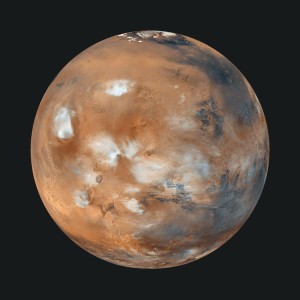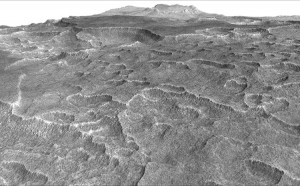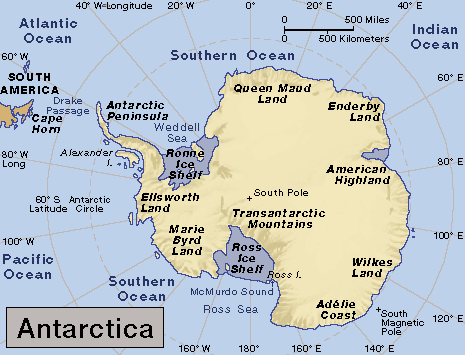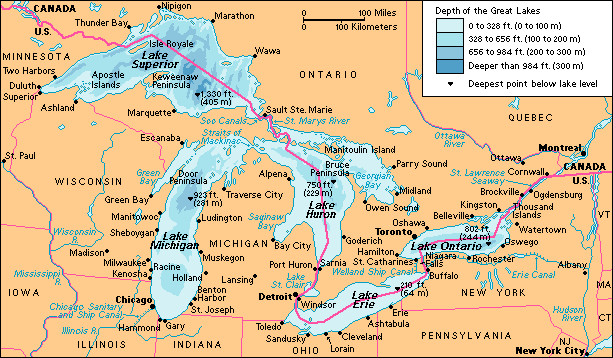The Frozen Waters of Mars
Tuesday, December 20th, 2016December 20, 2016
Researchers led by Cassie Stuurman of the University of Texas, Austin, recently used the Mars Reconnaissance Orbiter (MRO) to discover a vast deposit of ice beneath the surface of Mars. They published their findings in late November in the journal Geophysical Research Letters. To future human explorers, the ice deposit could prove more valuable than gold.

Large deposits of ice have been discovered beneath the surface of Mars, the fourth planet from the sun. Credit: NASA/JPL/Malin Space Science Systems
The MRO, launched by the United States National Aeronautics and Space Administration (NASA) in 2005, carries the highest resolution camera ever sent to Mars. The camera is capable of resolving (distinguishing) objects on the planet’s surface less than 1 meter (3 feet) across. Its high-resolution images helped identify safe landing sites for subsequent Mars landers and discovered recurring slope lineae, patterns on Martian hills and valleys likely formed by the flow of liquid water just below ground. The MRO payload also includes a high-resolution spectrometer that has mapped the occurrence of minerals formed in association with water; an instrument that measures temperatures, pressures, and dust concentrations throughout the Martian atmosphere; and ground-penetrating radar that can detect layered rocks and ice beneath the surface.

Images such as this one, showing curved depressions in Mars’s Utopia Planitia region, prompted NASA to use ground-penetrating radar aboard the Mars Reconnaissance Orbiter to check for underground ice. Credit: NASA/JPL-Caltech/Univ. of Arizona
This radar detected ice in a region called Utopia Planitia (planitia is a Latin word that can mean low plain or basin). It is the largest confirmed impact basin in the solar system, with a diameter of 2,100 miles (3,300 kilometers). An impact basin is a vast hollow created by a large asteroid or comet strike. The angular cracks and rimless pits in the Martian impact basin resemble similar surface features in Canada that mark underground ice deposits. The researchers estimate that the Martian ice deposit holds more water than North America’s Lake Superior, the largest body of fresh water on Earth. The deposit is buried beneath as little as 3 feet (1 meter) and as much as 33 feet (10 meters) of Martian soil. The deposit is not solid ice, but rather is 50 to 85 percent ice, with rock, dust, and other materials mixed in.
Billions of years ago, Mars was warmer than it is today. Oceans and streams of liquid water probably covered its surface. But the solar wind (continuous flow of particles from the sun) stripped away most of Mars’s atmosphere, causing much of the water to escape into space. Today, the surface of Mars is cold, dry, and dusty. Some water remains on Mars, however, frozen in underground deposits at the poles and other places around the planet.
The newly discovered ice deposit may have important implications for the eventual human exploration and colonization of Mars. Other such deposits exist on the planet, but most are small and found in areas with rough terrain. Mars’s poles are covered with large ice caps, but they are the coldest regions of the planet. Utopia Planitia is a large, flat basin located in the somewhat warmer mid-latitudes. Therefore, future Mars colonists may be able to land a spacecraft in Utopia Planitia and find water not far from their landing site. Such water could be used for drinking, growing crops, and creating rocket fuel for journeys back to Earth. Studying the ice could also help explain the history of Mars’s climate.




